 W
WUSS Advance (YT-28) was an Advance-class tugboat acquired by the United States Navy for the task of patrolling American coastal waters during the First World War.
 W
WUSS Agawam (SP-570) — later renamed as the USS Natick (SP-570) — was a yacht acquired during World War I by the United States Navy. She was employed by the Navy as a patrol boat in the Great Lakes and was returned to her owner when the war was over.
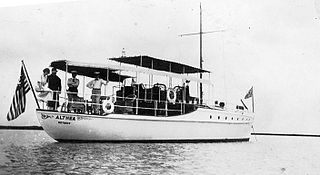 W
WUSS Althea (SP-218) was a 60-foot motor pleasure boat that served in the United States Navy from 1917-1919 and was sunk by ice in 1920.
 W
WUSS Anderton (SP-530), originally to have been USS Raymond J. Anderton (SP-530), was a patrol vessel and minesweeper that served in the United States Navy from 1917 to 1919.
 W
WUSS Arawan II (SP-1) was a motor yacht that served in the United States Navy as a patrol vessel from 1917 to 1918.
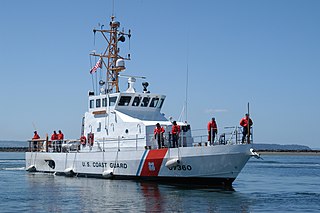 W
WUSCGC Blue Shark (WPB-87360) is an 87-foot (27 m) long Marine Protector-class coastal patrol boat of the United States Coast Guard built by Bollinger Shipyards in Lockport, Louisiana.
 W
WUSS Content (SP-538) was a motorboat that served in the United States Navy as a patrol vessel from 1917 to 1919.
 W
WThe first USS Courtney (SP-375) was a patrol boat and minesweeper in commission in the United States Navy from 1917–1919.
 W
WUSS Defiance (PGM-95/PG-95) was a gunboat in the United States Navy and later transferred to Turkey. She was an Asheville-class gunboat, and the third ship to be named Defiance, in honor of the city of Defiance, Ohio.
 W
WUSS Firebolt (PC-10) is the 10th member of the Cyclone-class of coastal patrol boats. She is a 174 ft (53 m) vessel with a crew of approximately 30 sailors, normally homeported at Naval Amphibious Base Little Creek, Norfolk, Virginia. Her armament includes two Mk38 chain guns, two Mk19 automatic grenade launchers, and two .50 in (12.7 mm) machine guns, as well as six Stinger missiles. She was laid down by Bollinger Shipyards on 17 September 1993, launched on 10 June 1994, and commissioned into the Navy on 10 June 1995.
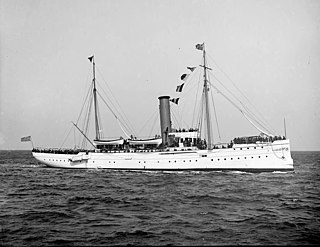 W
WUSRC Gresham was a cruising cutter and auxiliary gunboat built for the United States Revenue Cutter Service to patrol the Great Lakes. She was one of a series of cutters named for former U.S. Secretaries of the Treasury. Her namesake Walter Q. Gresham served as the 35th Secretary of the Treasury in 1884 and died in 1895 while serving as the 33rd U.S. Secretary of State. She became part of the newly created United States Coast Guard in 1915, and also served as a coastal convoy escort and patrol boat under United States Navy control during both World War I and World War II. After being decommissioned by the Coast Guard in 1944, she eventually came under Israeli control in 1947. She carried Jewish refugees from Italy to Palestine and later served in the fledgling Israeli Navy until 1951.
 W
WUSCGC Halibut is a United States Coast Guard Marine Protector-class coastal patrol boat based in Marina del Rey, California. Her patrol area is the 300 miles (480 km) from Morro Bay to Dana Point, California, and several important offshore islands.
 W
WThe Heritage-class cutter, also known as the Offshore Patrol Cutter and the Maritime Security Cutter, Medium, is one design among several new cutter designs developed as part of the United States Coast Guard Integrated Deepwater System Program.The Cutter Is Built By Eastern Shipbuilding.
 W
WUSS Inca (1898) was a small 120 long tons (120 t) yacht acquired by the United States Navy during the Spanish–American War. She was outfitted with an 11-pounder gun and, for a short while, patrolled Boston Harbor, before being turned over to the Massachusetts militia as a training ship, a role she retained until 1908.
 W
WThe Island-class patrol boat is a class of cutters of the United States Coast Guard. 49 cutters of the class were built, of which 37 remain in commission. Their hull numbers are WPB-1301 through WPB-1349.
 W
WUSS Katherine K. (SP-220) was a United States Navy patrol vessel and tug in commission from 1917 to 1919.
 W
WThe Legend-class cutter, also known as the National Security Cutter (NSC) and Maritime Security Cutter, Large, is the largest active patrol cutter class of the United States Coast Guard. Entering into service in 2008, the Legend class is the largest of several new cutter designs developed as part of the Integrated Deepwater System Program.
 W
WThe Long Range Interceptor (LRI) is an 11-meter high speed launch vessel designed to be deployed from United States Coast Guard cutters via a rear launching ramp. The Long Range Interceptor is an aluminum rigid hull inflatable boat (RHIB), powered by Ultrajet brand water-jets, for intercepting and boarding suspect vessels. It mounts a radar, special shock-proof seats, and can travel at 35 knots. They can be armed with machine guns or grenade launchers, and can be equipped with ballistic panels for crew protection when required.
 W
WUSCGC Manowar (WPB-87330) is an 87-foot (27 m) long Marine Protector-class patrol boat of the United States Coast Guard built by Bollinger Shipyards in Lockport, Louisiana and was the thirtieth vessel commissioned in her class. Manowar is homeported at Galveston, Texas and her primary missions are ports, waterways and coastal security, search and rescue, law enforcement, marine environmental response, recreational boating safety and military readiness. She was commissioned in 2001.
 W
WThe Marine Protector class is a class of coastal patrol boats of the United States Coast Guard. The 87-foot-long vessels are based on the Stan 2600 design by Damen Group, and were built by Bollinger Shipyards of Lockport, Louisiana. Each boat is named after a marine predator.
 W
WUSCGC Marlin is the fourth Marine Protector-class coastal patrol boat. Her home port is Fort Myers, Florida.
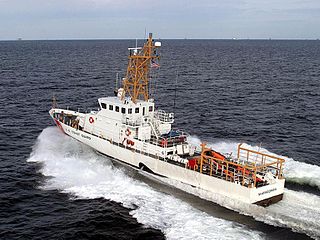 W
WUSCGC Matagorda (WPB-1303) is an Island-class patrol boat of the United States Coast Guard. She was commissioned 24 April 1986. Matagorda was one of eight of the 110-foot cutters to be modified under the Integrated Deepwater System Program aka. "Deepwater" to 123-foot. She was taken out of service about December 2006 due to problems with the Deepwater conversion.
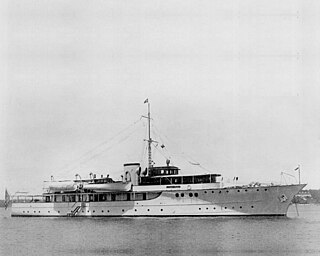 W
WUSS Moonstone (PYc-9) was a coastal patrol yacht in the service of the United States Navy. She was built in 1929 as Nancy Baker by Germaniawerft in Kiel, Germany, later renamed Mona, and subsequently acquired by the Navy as the Lone Star on 10 February 1941. Renamed Moonstone and designated PYc-9, she was converted for U.S. Navy service in Jacksonville, Florida, and commissioned on 10 April 1941. She was named for the gemstone moonstone.
 W
WUSS Nashville (PG-7), a gunboat, was the only ship of its class. It was the first of three ships of the United States Navy to hold the name Nashville.
 W
WUSRC Onondaga was an Algonquin-class cutter built for the U.S. Revenue Cutter Service for service on the Great Lakes. Because of the Spanish–American War, she was cut in half shortly before completion and transported to Ogdensburg, New York for service on the Atlantic coast although the war ended before she could be put into service. After the formation of the United States Coast Guard in 1915 she became USCGC Onondaga. She served as a patrol vessel at various Atlantic coast ports before World War I and unlike most Coast Guard cutters during World War I, she remained under the control of the Commandant of the Coast Guard. After the war she patrolled for a brief time based at New London, Connecticut before being decommissioned in 1923.
 W
WThe first USS Orca (SP-726) was a yacht that served in the United States Navy as a patrol vessel from 1917 to 1918.
 W
WUSS Anderton (SP-530), originally to have been USS Raymond J. Anderton (SP-530), was a patrol vessel and minesweeper that served in the United States Navy from 1917 to 1919.
 W
WThe USCGC Roanoke Island is the 46th Island class cutter to be commissioned. She was commissioned in Homer, Alaska, on February 7, 1992. Five other Island Class cutters are based in Alaska. Her primary missions include "search and rescue, fisheries enforcement and homeland security."
 W
WUSS Sandoval (1895) was an Alvarado-class gunboat acquired by the United States Navy from the Spanish as a prize-of-war. Duties assigned her by the Navy included patrolling coastal and river waterways, and, later, acting as a "practice ship" for the United States Naval Academy at Annapolis, Maryland and for the New York Naval Militia as well.
 W
WThe fourth USS Scorpion was a steam yacht in commission in the United States Navy from 1898 to 1899, 1899 to 1901, and 1902 to 1927.
 W
WUSCGC Sea Devil is the 68th Marine Protector-class coastal patrol boat to be built, and the first of four to be paid for by the US Navy. It is operated by the U.S. Coast Guard. Her home port is Naval Base Kitsap-Bangor in Silverdale, Washington, where she and her sister ship Sea Fox are assigned to one of two Maritime Force Protection Units. Their sole mission is to escort the Navy's largest submarines, the nuclear-armed Ohio class, while in and near their moorings in Puget Sound. USCGC Sea Dragon and USCGC Sea Dog guard the submarine base in Kings Bay, Georgia, on the Atlantic Ocean.
 W
WUSCGC Sea Dragon (WPB-87367) is a Marine Protector-class cutter, that is assigned to one of two special Maritime Force Protection Units. Each unit is assigned to escort nuclear submarines from one the United States Navy's two main submarine bases. Sea Dragon was assigned to Naval Submarine Base Kings Bay.
 W
WUSCGC Sea Fox was the last Marine Protector-class coastal patrol boat to be built. Her home port is Bangor, Washington.
 W
WThe United States Coast Guard (USCG) Short Range Prosecutor is a 7-meter, high speed launch designed to be launched from cutters, at speed, from a stern launching ramp. The Short Range Prosecutor is a rigid-hull inflatable, powered by water-jets, for intercepting and boarding suspect vessels. It mounts a radar and special shock-proof seats, and can travel at 30 knots.
 W
WThe USCGC Sockeye (WPB-87337) is the United States Coast Guard's 37th Marine Protector class cutter. She is stationed in Bodega Bay, California.
 W
WUSCGC Tern (WPB-87343) is an 87-foot (27 m) long Marine Protector-class coastal patrol boat of the United States Coast Guard stationed on Yerba Buena Island in San Francisco, California. Built by Bollinger Shipyards in Lockport, Louisiana and commissioned in 2002, Tern is a multi-mission platform capable of performing search and rescue (SAR), law enforcement (LE), and fisheries patrols, as well as drug interdiction and illegal alien interdiction duties up to 200 miles off shore spanning from Mendocino County, California south to the Mexico–United States border.
 W
WUSS Wakiva II (SP-160), often referred to as USS Wakiva, was an armed yacht that served in the United States Navy from 1917 to 1918 and saw combat in World War I. She was originally the yacht SS Wakiva II built for Lamon V. Harkness in Scotland.
 W
WUSS Zephyr (PC-8) is a Cyclone-class patrol coastal ship in the United States Navy.